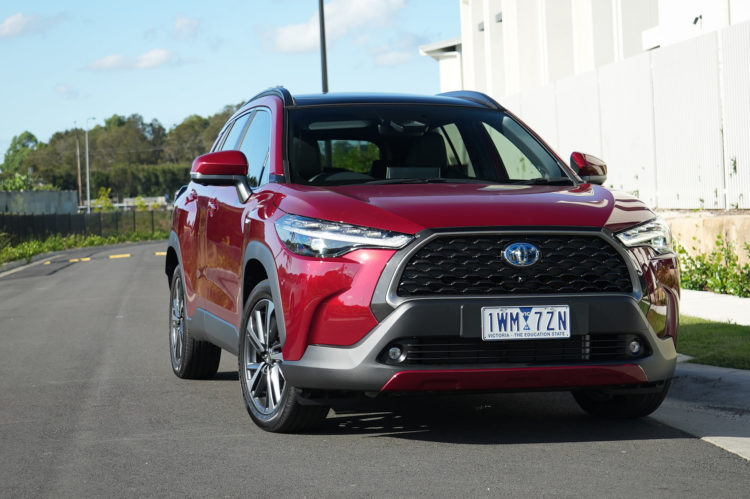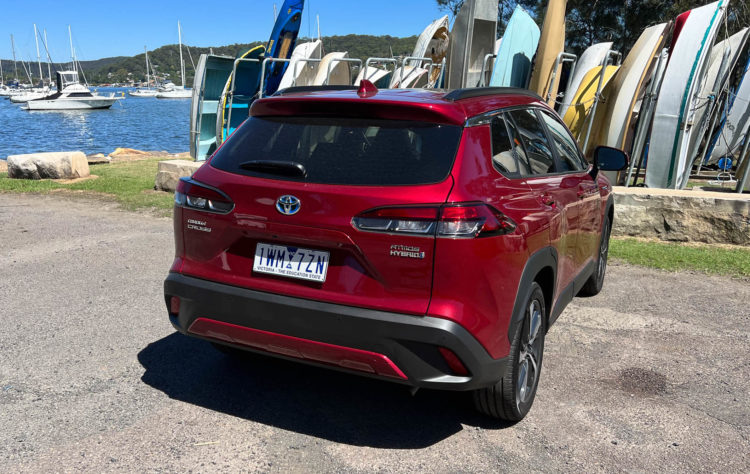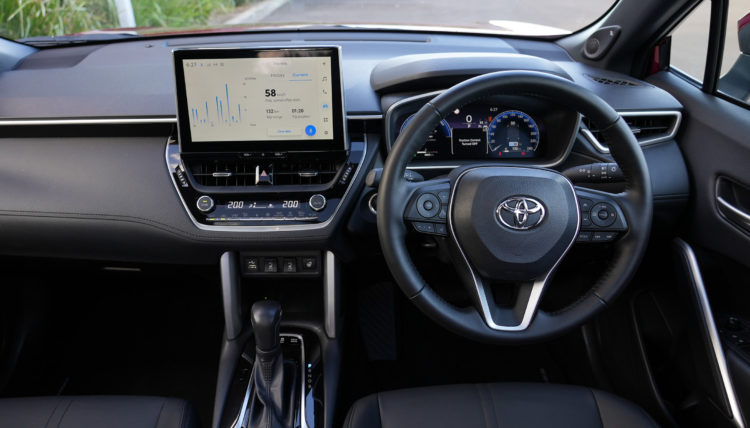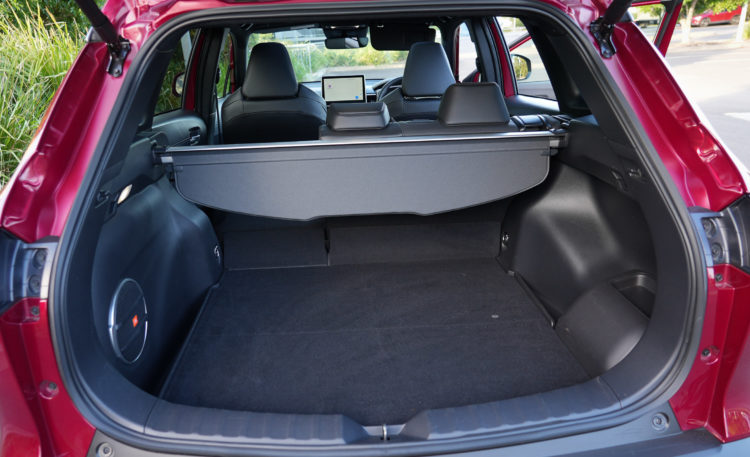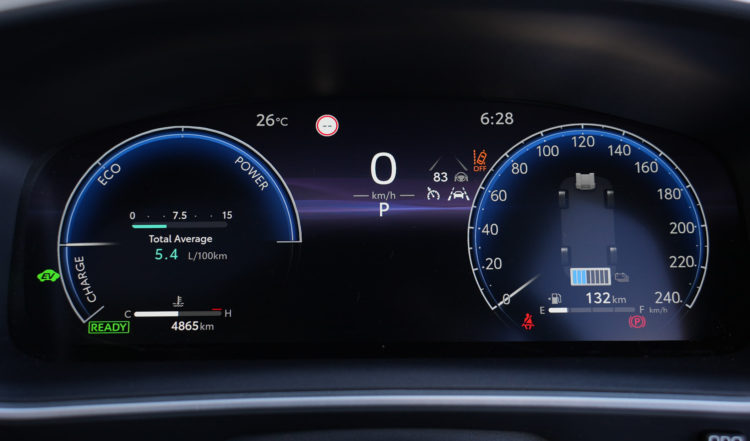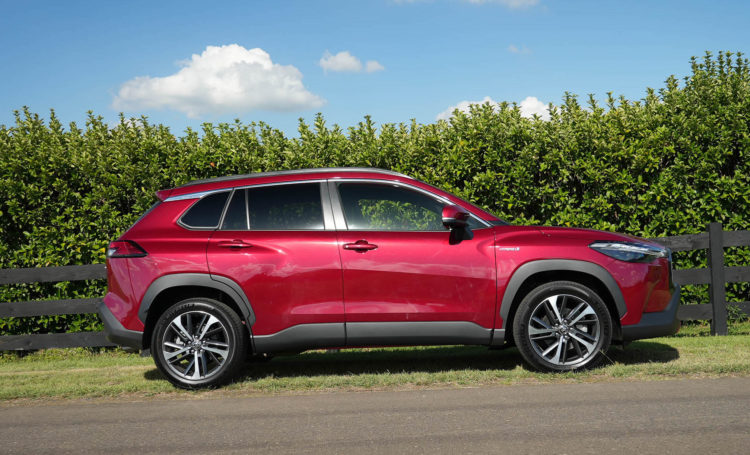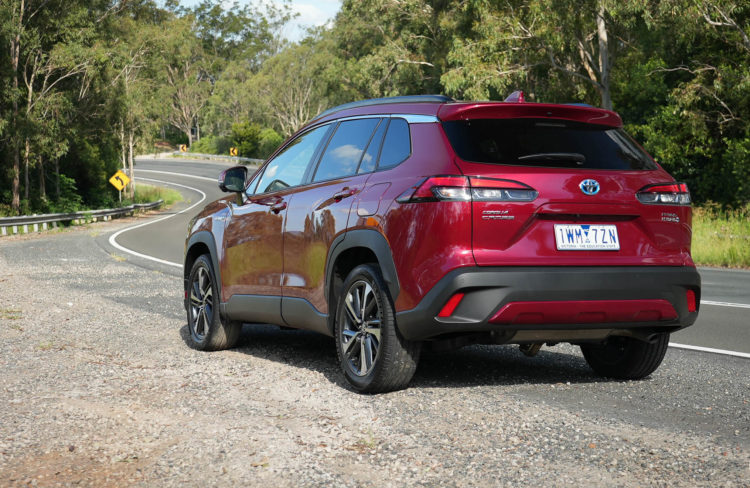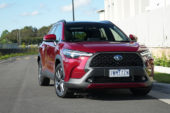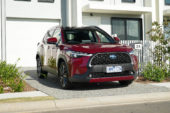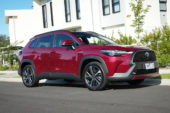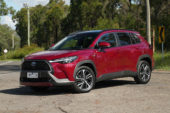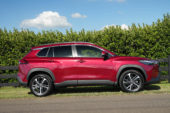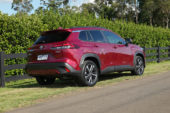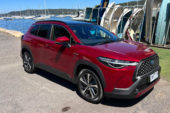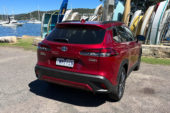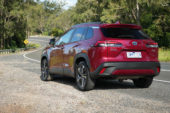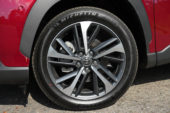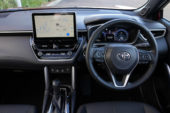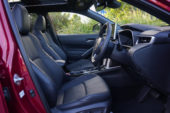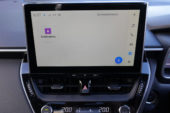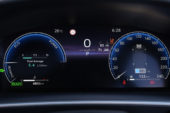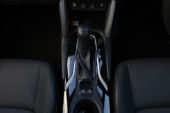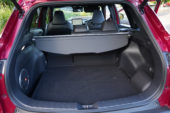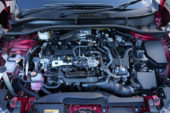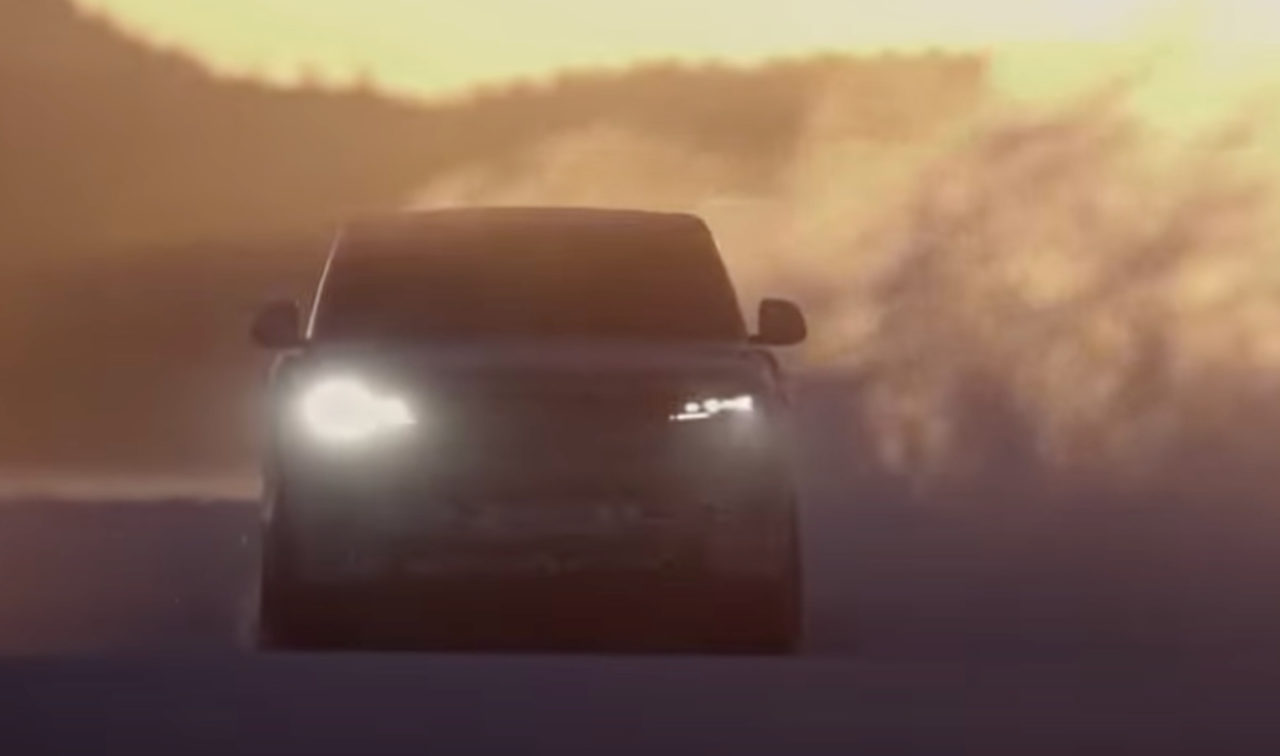It seems Toyota is on a mission to fill every niche in the Australian new car market, with the Corolla Cross designed to fit between the Yaris Cross and RAV4, and alongside the regular Corolla. This relative newcomer is designed to penetrate the small SUV segment, like the C-HR.
Spun off from the TNGA-C based Corolla, the Corolla Cross integrates familiar features and interior to a more practical, upright package, aimed at those who would prefer something a bit higher-riding and more practical than the evergreen ‘Rolla.
With 1468 units shifted to the end of March for 4.9 percent market share (April 2023, VFACTS), we borrowed the top-spec Atmos eFour hybrid to see how it handles the daily grind and how it fits into Toyota’s expansive lineup.
2023 Toyota Corolla Cross Atmos Hybrid – THE SPECS
[column width=”47%” padding=”6%”]Engine: 2.0-litre petrol four-cylinder hybrid
Output (combined): 146kW
Transmission: CVT auto
Drive type: All-wheel drive
Wheels: F: 18×7.0, 225/50
ANCAP: Five stars
Tare weight: 1525kg
Power-to-weight: 10.44:1 (kg:kW)
Official fuel economy: 4.4L/100km
Economy during test: 5.3L/100km
Fuel capacity/Type: 43L/91 RON[/column] [column width=”47%” padding=”0″]Power efficiency: 33.18kW:L/100km
0-60km/h: 3.71 seconds*
0-100km/h: 8.26 seconds*
60-110km/h: 5.95 seconds*
1/4 mile: 16.02 seconds at 141.2km/h*
Max acceleration: 0.738g*
100-0km/h braking: 3.20 seconds at 40.71 metres*
Max deceleration: -1.271g*
Decibel at idle (on standby): 25*
Peak decibel at 60-100km/h: 79*
Priced from: $49,050[/column][end_columns]
* Figures as tested by PerformanceDrive on the day. Factory claims may be different
2023 Toyota Corolla Cross Atmos Hybrid – THE PACKAGE
At 4460mm long, 1825mm wide and 1620mm tall and with a wheelbase of 2640mm, the Corolla Cross is 280mm longer than a Yaris Cross but 120mm shorter than a RAV4. Weirdly enough, the wheelbase is only 50mm shorter than RAV4 but 90mm longer than the Yaris Cross. It’s also the same wheelbase as the regular Corolla hatchback.
Pop the power-operated boot and you’ll find its internal volume is a reasonable 380L with the seats up, or significantly more when they are folded. This compares well against the regular hatchback’s 333L volume. All models can tow 750kg with or without trailer brakes.
In terms of where this model sits, the Atmos is the flagship, with GX and GXL grades sitting below, starting from $33,000 for the non-hybrid petrol. The Atmos, meanwhile, starts from $43,550 for the petrol-only, moving up to $46,050 for the 2WD hybrid, and from $49,050 for the AWD hybrid tested here (all prices are before on-road costs).
To set it apart from its lowly brethren, the Atmos features a panoramic glass roof, a nine-speaker JBL sound system with subwoofer, power-operated tailgate with leg sensor, and heated seats and steering wheel. This is on top of an already generous equipment list, which includes wireless phone charging, wireless Apple CarPlay and Android Auto, and a 10.5-inch touch-screen with AM/FM and DAB.
A 12.3-inch digital instrument cluster includes detailed, high-resolution graphics and an animation that changes background colour when you select a different driving mode. We found this visually pleasing to the eye.
While the interior design is overall very attractive and well-made, we can see how Toyota has been a bit stingy with the soft plastics, with a visually similar texture to the right of the driver actually being a hard, cheaper-feeling material. The overall environment is still one of quality and serenity.
The only other criticisms might be the lack of USB-C ports, and the Nanoe-branded climate control system is nice, but on a hot day with a sunburnt face, this author would’ve appreciated a far more vigorous blower fan.
Stepping inside the Atmos reveals a stark and grey Atmos-phere (sorry). Piano black surrounds for the climate controls break up the interior a bit, but it really relies on that panoramic roof to lift the ambience. Having said that, everything is nicely presented and conveniently arranged.
All controls are where you’d expect them to be, including those for the front camera, climate, cruise control and steering-wheel mounted audio controls. Power driver’s seat adjustment is easy with reasonable long distance comfort and the steering wheel adjusts for reach and rake. Ergonomically, we would call this a win.
Room in the back is perhaps a little more confined than expected, but still able to seat three adults in reasonable comfort. If outright room is a main concern, then the RAV4 or Kluger might be more appropriate, but for a lot of scenarios, this is plenty.
As is the case with most Toyotas, the affordability of servicing is outstanding, with prices capped at $250 at every 15,000km/12 month intervals up to 75,000km or five years. It is also backed by a five year/unlimited kilometre warranty.
As you’d expect the Corolla Cross has been awarded a five-star ANCAP safety rating and offers all of the expected ADAS systems, branded in this case as Toyota Safety Sense. Adaptive Cruise, autonomous emergency braking and rear cross-traffic alert are just some of the systems. You can read the comprehensive ANCAP report on the car‘s passive and active safety performance here.
2023 Toyota Corolla Cross Atmos Hybrid – THE DRIVE
Sitting at the top of the Corolla Cross’s three available powertrains, the AWD hybrid variant combines a 2.0-litre Atkinson cycle four-cylinder engine with a hybrid drive system for the same 146kW system output as the 2WD model. But this is now distributed between front and rear axle e- motors, rather than just front. That the 4.4L/100km fuel consumption rating is only 0.1L higher than the 2WD is a clever feat.
Push the start button and it becomes a mixture of good and meh. In the good department would have to be the instant step-off response of the electric motors. Unlike a lot of under-engined SUVs (cough, MG ZS, cough), the confidence to dart out of intersections and pick gaps is always under foot.
In sport mode, the front wheels even chirp a bit. During performance testing with a Vbox Sport we clocked a best 0-100km/h run in 8.27 seconds, which is decent for a vehicle like this. Even better, we achieved 5.3L/100km during our time with the car, driving in mixed conditions.
Although the Corolla Cross sits atop Toyota’s highly-acclaimed TNGA-C platform, it isn’t really tuned for sporty driving. And that’s perfectly fine for this type of car. What it means is the rigidity we expect from the platform is present and accounted for, but there is more lean and softness from the suspension than we’d expect.
We notice there is a bit of numbness from the steering when pushed hard, but you can still punt the car with a reasonable degree of accuracy and it offers good high speed stability.
2023 Toyota Corolla Cross Atmos Hybrid – THE VIDEO
2023 Toyota Corolla Cross Atmos Hybrid – THE VERDICT
The Corolla Cross really is the Corolla of SUVs, for better or worse. Although Toyota set out to redefine the regular Corolla with the current model’s migration to the TNGA, this vehicle has more middle-of-the-road ambitions and execution. It feels like it focuses more on practicality and squeezing into a niche in an already comprehensive lineup than revolutionising the automobile.
On the other hand, it is perfect for those wanting the dependability and reliability of the regular Corolla hatch, but require more boot space and like the idea of a higher ride height. Fuel economy and practicality are its most attractive traits in our view, and that’s going to go down very well with the majority of buyers in this segment. We also think it’s great that Toyota offers the hybrid package across all trim levels.
Be aware that, at the time of writing, the Corolla Cross hybrid could be subject to extended waiting times like other Toyotas at the moment, so check with your local dealer before getting too excited about having one in your driveway in a timely manner.
[column width=”47%” padding=”6%”]PROS:
– Added practicality and boot space over the regular Corolla
– Outstanding fuel economy with the hybrid option
– Hybrid available on all trim levels
– Toyota’s reputation for reliability and resale value
[/column] [column width=”47%” padding=”0″]CONS:
– Touch-screen layout is a bit bare
– Suspension is a bit soft for our liking
– Is there really a need for another small SUV next to C-HR?[/column][end_columns]
As always, if you’re thinking about buying a new car don’t forget to click here to speak with our car buying specialists.
